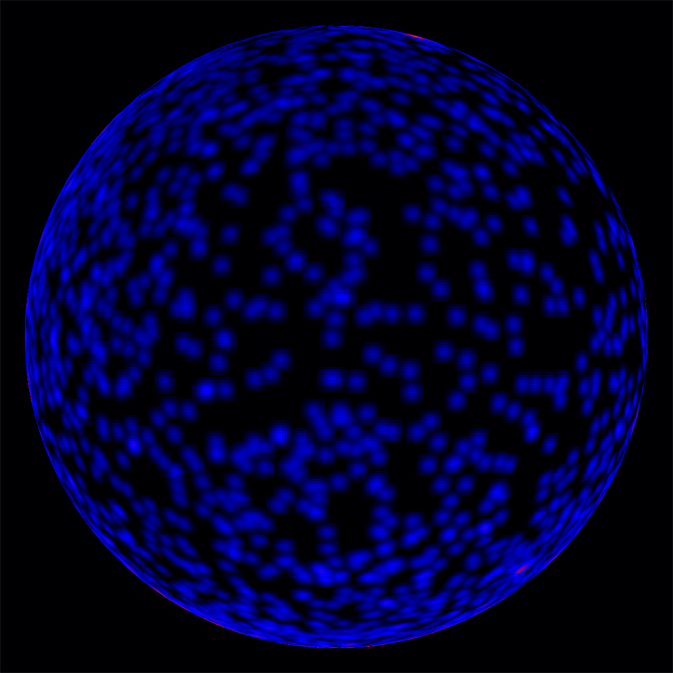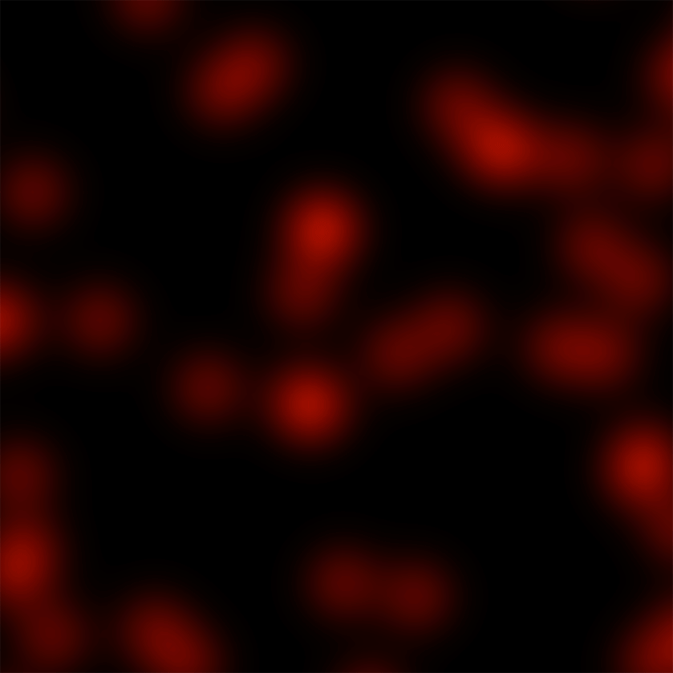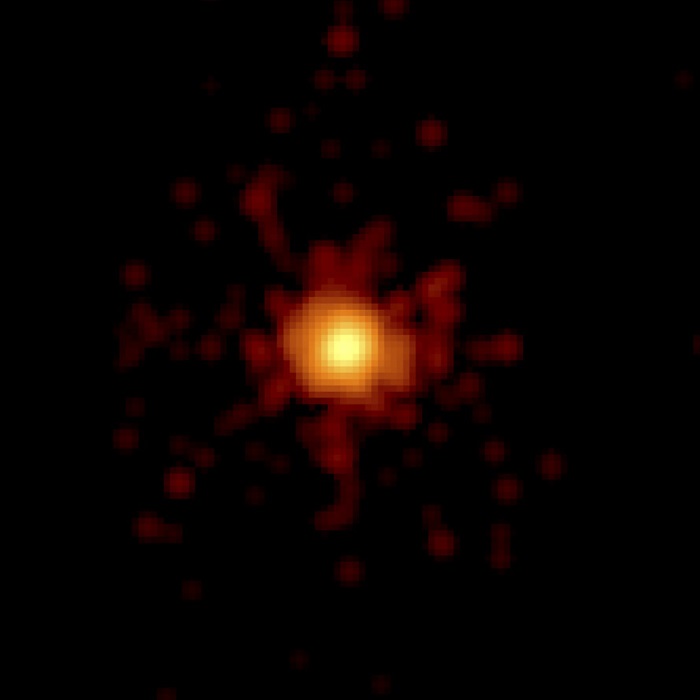.

The maps in this animation show how the sky looks at gamma-ray energies above 100 million electron volts (MeV) with a view centered on the north galactic pole. The first frame shows the sky during a three-hour interval prior to GRB 130427A. The second frame shows a three-hour interval starting 2.5 hours before the burst, and ending 30 minutes into the event. The Fermi team chose this interval to demonstrate how bright the burst was relative to the rest of the gamma-ray sky. This burst was bright enough that Fermi autonomously left its normal surveying mode to give the LAT instrument a better view, so the three-hour exposure following the burst does not cover the whole sky in the usual way.
Credit: NASA/DOE/Fermi LAT Collaboration
.
Just after 3:47 a.m. EDT on Saturday, April 27, Fermi's Gamma-ray Burst Monitor (GBM) triggered on an eruption of high-energy light in the constellation Leo. The burst occurred as NASA's Swift satellite was slewing between targets, which delayed its Burst Alert Telescope's detection by less than a minute.
Fermi's Large Area Telescope (LAT) recorded one gamma ray with an energy of at least 94 billion electron volts (GeV), or some 35 billion times the energy of visible light, and about three times greater than the LAT's previous record. The GeV emission from the burst lasted for hours, and it remained detectable by the LAT for the better part of a day, setting a new record for the longest gamma-ray emission from a GRB.
.

This animation shows a more detailed Fermi LAT view of GRB 130427A. The sequence shows high-energy (100 Mev to 100 GeV) gamma rays from a 20-degree-wide region of the sky starting three minutes before the burst to 14 hours after. Following an initial one-second spike, the LAT emission remained relatively quiet for the next 15 seconds while Fermi's GBM instrument showed bright, variable lower-energy emission. Then the burst re-brightened in the LAT over the next few minutes and remained bright for nearly half a day.
Credit: NASA/DOE/Fermi LAT Collaboration
.
The burst subsequently was detected in optical, infrared and radio wavelengths by ground-based observatories, based on the rapid accurate position from Swift. Astronomers quickly learned that the GRB was located about 3.6 billion light-years away, which for these events is relatively close.Gamma-ray bursts are the universe's most luminous explosions. Astronomers think most occur when massive stars run out of nuclear fuel and collapse under their own weight. As the core collapses into a black hole, jets of material shoot outward at nearly the speed of light.
The jets bore all the way through the collapsing star and continue into space, where they interact with gas previously shed by the star and generate bright afterglows that fade with time.
If the GRB is near enough, astronomers usually discover a supernova at the site a week or so after the outburst.
"This GRB is in the closest 5 percent of bursts, so the big push now is to find an emerging supernova, which accompanies nearly all long GRBs at this distance," said Goddard's Neil Gehrels, principal investigator for Swift.
Ground-based observatories are monitoring the location of GRB 130427A and expect to find an underlying supernova by midmonth.
.

Swift's X-Ray Telescope took this 0.1-second exposure of GRB 130427A at 3:50 a.m. EDT on April 27, just moments after Swift and Fermi triggered on the outburst. The image is 6.5 arcminutes across.
Credit: NASA/Swift/Stefan Immler
.
Quelle:NASA
